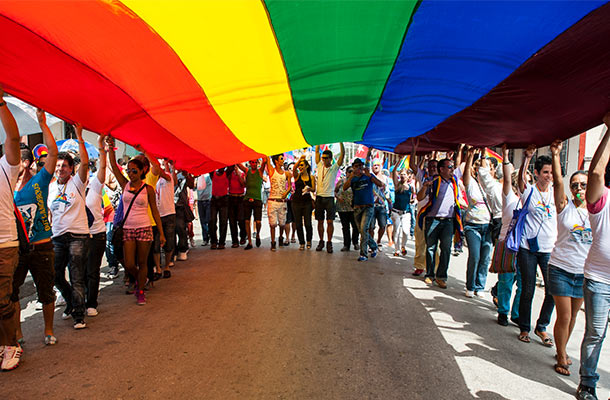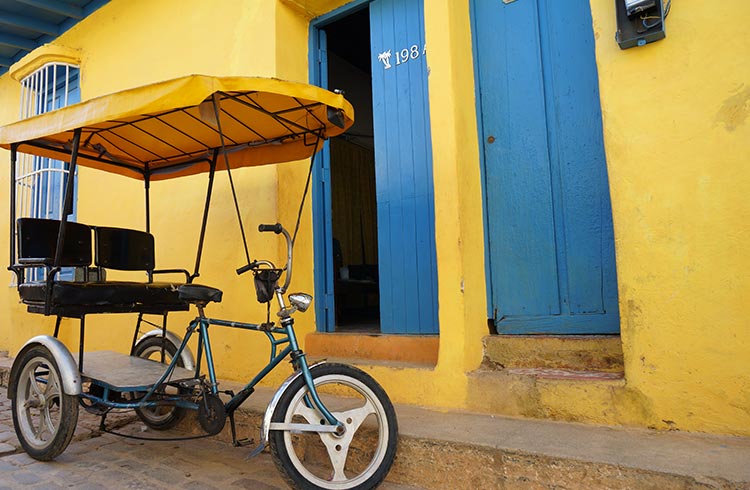Is Cuba a Safe Destination for LGBTQ+ Travelers?
LGBTQ+ travel expert Ed Salvato shares his advice and useful resources to help you plan your vacation in Cuba.
 Photo © iStock/PhotosByByron
Photo © iStock/PhotosByByron
Cuba is a popular LGBTQ+ travel destination thanks to its rich history and culture, unspoiled nature, and yes, vibrant gay life – especially compared to other islands in the Caribbean.
- Is Cuba Safe for LGBTQ+ Travelers?
- What Are the Local’s Attitudes to LGBTQ+ Travelers in Cuba?
- Gay-Friendly Areas to Visit in Cuba
- Helpful Resources for LGBTQ+ Travel in Cuba
Is Cuba safe for LGBTQ+ travelers?
While local LGBTQ+ people may experience legal or societal difficulties, LGBTQ+ visitors are highly unlikely to experience any challenges due to their sexuality or gender identity.
Homosexuality was decriminalized in Cuba in 1979. In 2008, Mariela Castro Espín, director of the Cuban National Center for Sex Education in Havana, LGBTQ+ activist, and daughter of President Raúl Castro – made huge strides in the queer rights space.
She delivered a speech championing LGBTQ+ advocacy, a moment that inspired the country’s first pride parade in Havana. Today, the parade still continues annually across Cuba (including Santa Clara), but more as a protest than a celebration.
Her involvement has helped improve Cuba’s reputation around the world as a safer, more queer-friendly destination. While the pride parades were stopped in 2019, the government sanctioned the opening of the country’s first gay hotel, the Gran Muthu Rainbow Hotel and there has been discussion of recognizing the rights of same-sex couples.
What are the locals' attitudes to LGBTQ+ travelers in Cuba?
For decades, LGBTQ+ Cubans were the black sheep of Cuba — outcasts trapped on a Caribbean Island that was at once conservative, Catholic, and communist.
While Cuba remains socially conservative, especially outside of big cities, times have changed dramatically.
You’ll find a visible queer scene in Havana: in the Vedado neighborhood, along the Malacón at Mi Cayito beach, which is popular with gay men, and in bars and clubs that reflect a more innocent, pre-Grindr time.
Holding hands and basic affection isn’t a big deal in Havana, especially in the areas around where LGBTQ+ people congregate. But a little more caution is advised outside the city.
Gay-friendly areas to visit in Cuba
Cuba got its first dedicated gay bar in 2013, which closed a few years ago. Kingbar, which opened a few years ago in the hip Vedado neighborhood, harks back to a time when American queer bars still had a bit of a renegade quality.
El Malecón, along this ocean, is a popular hangout for all Habaneros, with queer people congregating in the area around Avenida 23.
Mi Cayito is the beach popular with gay men, about 15 miles east of Havana. X Y (formerly Bar Myxto) is one of our favorite Cubano gay bars and Café Cantante Mi Habana, a club near Havana’s Revolutionary Square, hosts live music.
Helpful resources for LGBTQ+ travel in Cuba
Trip-Planning/LGBTQ+ Tour Companies
- Out Adventures and Remember Cuba run LGBTQ+ Cuba trips.
- For convenience and ease, we highly recommend you join one of their trips, or do as we do and create a custom tour with Matt of Detours With Matt. He runs scheduled groups and can also be hired for private groups, as we did. He has led about 30 trips in Cuba, and ingratiated himself to a wide swath of locals in the process. The good will he’s fostered locally results in VIP treatment and personal engagement of the best kind.
LGBTQ+/human rights organizations contacts
- Cuban Foundation for LGBTI Rights
- National Center for Sexual Education
- El Mejunje (Santa Clara)
Noteworthy hotels
Related articles
Simple and flexible travel insurance
You can buy at home or while traveling, and claim online from anywhere in the world. With 150+ adventure activities covered and 24/7 emergency assistance.
Get a quote
No Comments